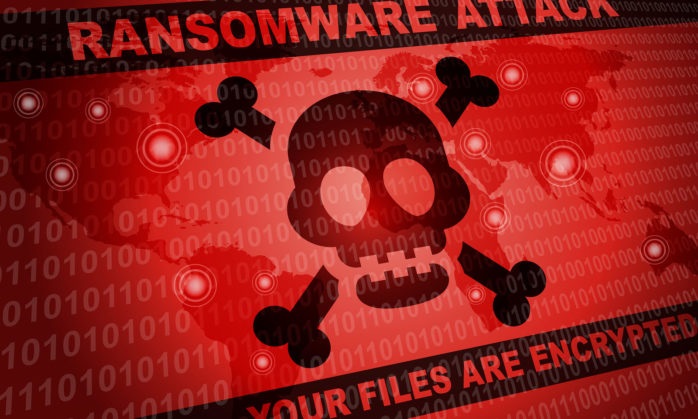What is Ransomware?
The Growing Threat of Ransomware: Understanding the Malicious Software and Protecting Against Attacks Through Antivirus Measures and Cybersecurity Education
Ransomware is a type of malicious software, also known as malware, which is often used by cybercriminals to launch sophisticated cyberattacks on individuals, organizations, or institutions. As its name suggests, ransomware revolves around the idea of a 'ransom.' Once ransomware infiltrates a user's system, it seeks to either encrypt the user's data or lock their system until a ransom is paid, usually in an anonymized currency such as Bitcoin.Understanding ransomware involves appreciating its evolution over the years. The emergence of ransomware is generally associated with the rise of internet usage and cybercriminal activities in the late 20th and early 21st centuries. Initially, ransomware relied on basic symmetric encryption. today, cybercriminals are deploying asymmetric encryption, making the decryption process more complex and subsequently maximizing the 'hostage situation' effect.
This evolution has led to varying ransomware types, each with specific characteristics. For instance, crypto-ransomware involves encrypting valuable data so the victim cannot access it, while locker ransomware locks users out of their devices. Other variants include scareware, which leverages fear-induced tricks to compel users to pay, and doxware threatening to leak sensitive information unless the ransom is paid.
Significant to ransomware attacks' success is the efficiency of the distribution channels. Typically, attackers use phishing techniques, with victims receiving an email that appears harmless but contains a hidden malicious link or attachment. Clicking on this link or downloading the attachment triggers the ransomware. Alternatively, some attacks also come from exploitative malicious websites or adware.
Ransomware doesn't just cause disruptions in victims' digital lives; it can also lead to massive financial losses. The ransom demanded is often calculated to be financially painful but achievable, luring victims into paying for urgent data recovery. Worse still, even after payment, there is no guarantee that victims will regain access to their data or system.
In consequence of the rampant increase and sophistication of ransomware attacks, cybersecurity and antivirus vendors have been particularly active in creating robust protective measures against this grave threat. Anti-ransomware tools use behavioral-based detection, where the software constantly monitors files and guards against sudden, unauthorized encryption.
Apart from relying on antivirus solutions, educating computer users and implementing strong cybersecurity hygiene are other imperative aspects. This education includes knowing the forms of ransomware, how it operates in detail, and the common pathways for infection such as phishing scams. It also includes training on ways to prevent attacks, for example by maintaining regular system updates, being cautious while clicking on links or attachments, and avoiding suspicious emails or websites.
Creating regular backups of important data is another powerful countermeasure against ransomware. With a secure backup in place, a victim can restore their system to its pre-infected stage, thus neutralizing the threat's impact drastically.
It's also worth noting that cybersecurity professionals usually advise against paying ransoms. Payment serves to incentivize attackers and fund their malicious activities. paying doesn't guarantee the restoration of access, leading to double damage in many cases - financial loss and permanent data loss.
Ransomware is a highly complex and evolving threat in today’s digital world that significantly disrupts individual and corporate security. Strong antivirus tools, cybersecurity hygiene, ongoing user education, and law enforcement are critical to effective ransomware defense. This collective response will make it significantly more challenging for cybercriminals to continue their illicit activities, and perhaps one day, we may be able to eradicate ransomware completely.

Ransomware FAQs
What is ransomware?
Ransomware is a type of malicious software designed to block access to a computer system or files until a sum of money is paid. It is a form of cyber extortion where a hacker demands payment (usually in cryptocurrencies) in exchange for restoring access to the victim’s data.How does ransomware infect a computer?
Ransomware typically enters a computer system through phishing emails, infected attachments, or links to infected websites. It can also be spread through the exploitation of software vulnerabilities or through drive-by downloads.How can I protect my computer from ransomware?
To protect your computer from ransomware, you should keep your antivirus software up-to-date, avoid clicking on suspicious links or opening attachments from unknown sources, and backup your data regularly. You should also consider using a reputable antimalware software and keeping your operating system and applications updated with the latest security patches.What should I do if my computer is infected with ransomware?
If your computer is infected with ransomware, the first thing you should do is disconnect it from the internet to prevent further infection. You should also contact a cybersecurity professional or a reputable antivirus vendor to seek assistance in removing the malware. Do not pay the ransom, as there is no guarantee that your data will be restored, and it may encourage further attacks.| | A | | | B | | | C | | | D | | | E | | | F | | | G | | | H | | | I | | | J | | | K | | | L | | | M | |
| | N | | | O | | | P | | | Q | | | R | | | S | | | T | | | U | | | V | | | W | | | X | | | Y | | | Z | |
| | 1 | | | 2 | | | 3 | | | 4 | | | 7 | | | 8 | | |||||||